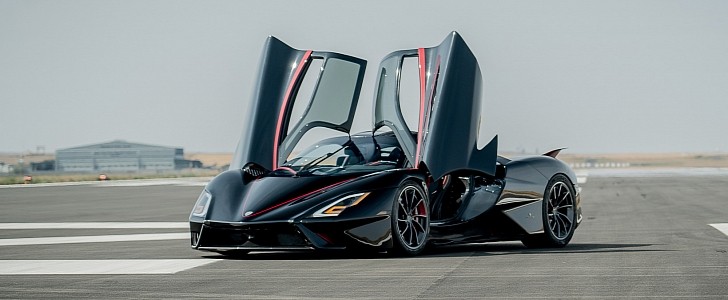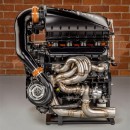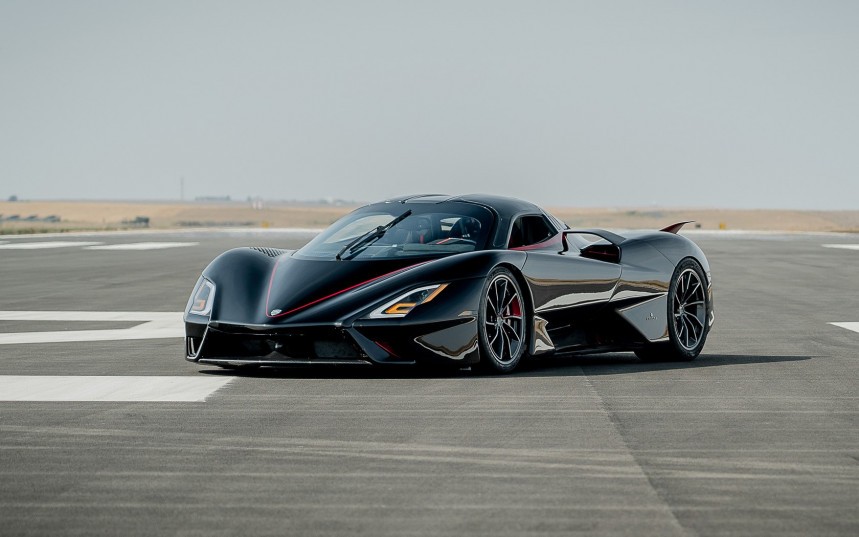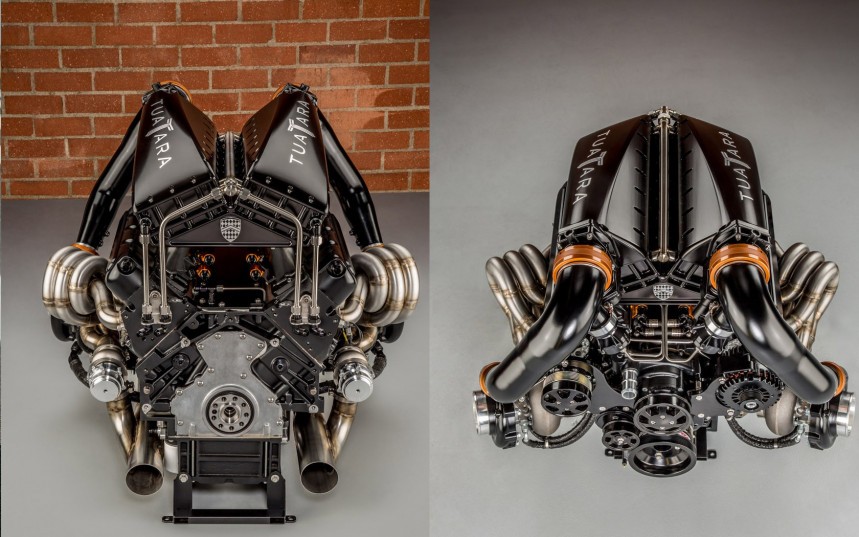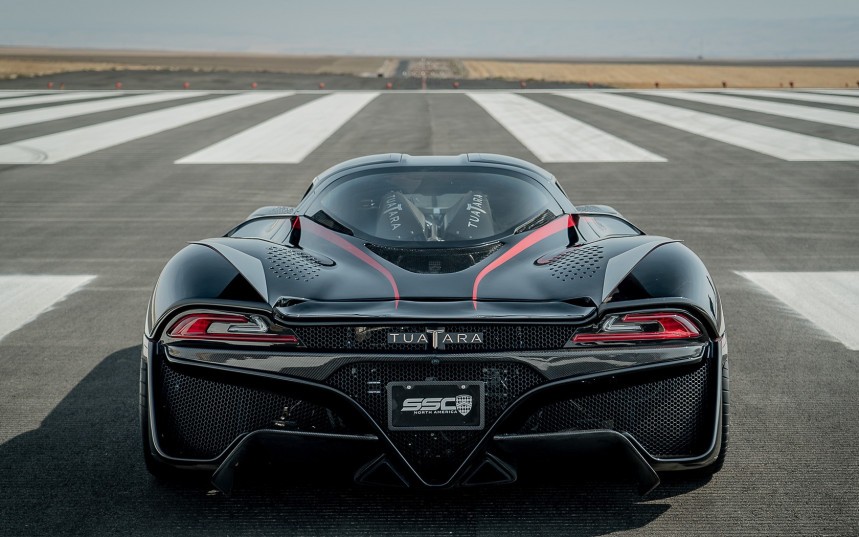At the heart of the world’s fastest production vehicle, the SSC Tuatara, stands a marvel of engineering that makes a bold statement, that combustion-engine-only power is still alive and well.
The Washington-based carmaker that gave us the SSC Aero is at it again, developing a worthy successor that has just set a 331mph (532kph) top-speed record near Las Vegas, dethroning the Koenigsegg Agera RS as the world’s fastest car.
The SSC Tuatara concept was previewed for the first time at the 2011 Pebble Beach Concours D'Elegance and after seven years of grueling work, the production version was shown to the world.
The lightning-fast car designed by former Pininfarina designer Jason Castriota gets its name from a reptile in New Zealand, known for having the fastest molecular evolution of any living animal.
The body of the car is constructed out of carbon fiber with high-strength aluminum crumple zones and incorporates active aerodynamics. The manufacturer claims that the Tuatara has the lowest drag coefficient in its segment.
To design the engine, SSC partnered with Nelson Racing Engines, a name that has become synonymous with extreme powered engine projects. It also enrolled Linder Power Systems to help with the development of engine sub-assembly fabrication.
The mid-placed engine was initially designed as a 6.9-liter twin-turbocharged V8 but in order to achieve a higher redline, its displacement was reduced to 5.9 liters (360 cu in; 5,900 cc)
.
This Nelson Racing Billet aluminum flat-plane crank V8 aided by twin-turbochargers produces 1,350 hp (1,007 kW; 1,369 PS) at 6,800 rpm) using premium unleaded gas.
The fuel injection system of this glorious engine is based on an electronic sequential port with dual injection per cylinder.
It can also run on ethanol-based flex fuel which drastically improves performance to 1,750 hp (1,305 kW; 1,774 PS) at 8,800 rpm.
To cope with the intense heat, the engine is cooled down using a sequential air intake system and dual-water to air intercoolers that keep the twin-turbos in optimal running conditions.
The SSC Tuatara can produce 1,280 lb.-ft (1,735 Nm.) of torque at 6,800 rpm, and all that power is transferred to the rear wheels by a 7-Speed automated manual transmission (AMT) with a robotized paddle-shifting system.
To stop the Tuatara when it is cruising at 250 mph (402 kph), the braking system feature 16.0-inch (41cm) ventilated and slotted carbon-ceramic discs with 6-piston calipers in the front and smaller, 15.0-inch (38cm) discs with 4-piston calipers on the rear axle.
While braking, the active rear wing deflects accordingly and comes to the aid of the braking system, much like we see on the McLaren Senna.
SSC offers the car in two available configurations, a “high speed” configuration that enables the overwhelming top speed that it recently set a record for. The other available configuration is “high downforce” that focuses more on maneuverability on the track.
It also features three driving modes, Sport, Track, and Lift, which adjust the right height and engine performance.
The Tuatara is built in the U.S. at a purpose-built facility in West Richland, Washington, and production is limited to 100 units.
The first customer car was delivered during the Monterey Car Week and was unveiled at the Philadelphia Motor Show on 7 February 2020.
The SSC Tuatara concept was previewed for the first time at the 2011 Pebble Beach Concours D'Elegance and after seven years of grueling work, the production version was shown to the world.
The lightning-fast car designed by former Pininfarina designer Jason Castriota gets its name from a reptile in New Zealand, known for having the fastest molecular evolution of any living animal.
To design the engine, SSC partnered with Nelson Racing Engines, a name that has become synonymous with extreme powered engine projects. It also enrolled Linder Power Systems to help with the development of engine sub-assembly fabrication.
The mid-placed engine was initially designed as a 6.9-liter twin-turbocharged V8 but in order to achieve a higher redline, its displacement was reduced to 5.9 liters (360 cu in; 5,900 cc)
This Nelson Racing Billet aluminum flat-plane crank V8 aided by twin-turbochargers produces 1,350 hp (1,007 kW; 1,369 PS) at 6,800 rpm) using premium unleaded gas.
The fuel injection system of this glorious engine is based on an electronic sequential port with dual injection per cylinder.
It can also run on ethanol-based flex fuel which drastically improves performance to 1,750 hp (1,305 kW; 1,774 PS) at 8,800 rpm.
To cope with the intense heat, the engine is cooled down using a sequential air intake system and dual-water to air intercoolers that keep the twin-turbos in optimal running conditions.
The SSC Tuatara can produce 1,280 lb.-ft (1,735 Nm.) of torque at 6,800 rpm, and all that power is transferred to the rear wheels by a 7-Speed automated manual transmission (AMT) with a robotized paddle-shifting system.
To stop the Tuatara when it is cruising at 250 mph (402 kph), the braking system feature 16.0-inch (41cm) ventilated and slotted carbon-ceramic discs with 6-piston calipers in the front and smaller, 15.0-inch (38cm) discs with 4-piston calipers on the rear axle.
While braking, the active rear wing deflects accordingly and comes to the aid of the braking system, much like we see on the McLaren Senna.
It also features three driving modes, Sport, Track, and Lift, which adjust the right height and engine performance.
The Tuatara is built in the U.S. at a purpose-built facility in West Richland, Washington, and production is limited to 100 units.
The first customer car was delivered during the Monterey Car Week and was unveiled at the Philadelphia Motor Show on 7 February 2020.
